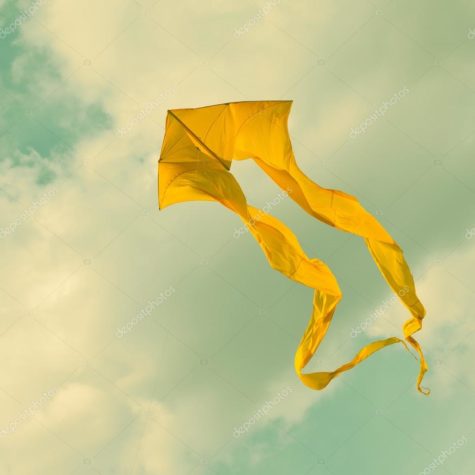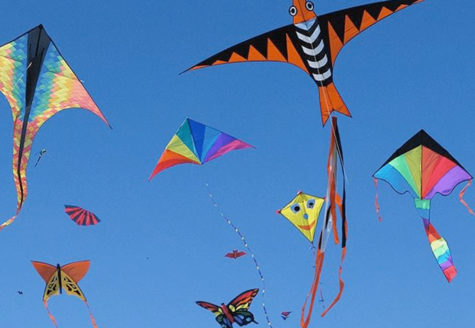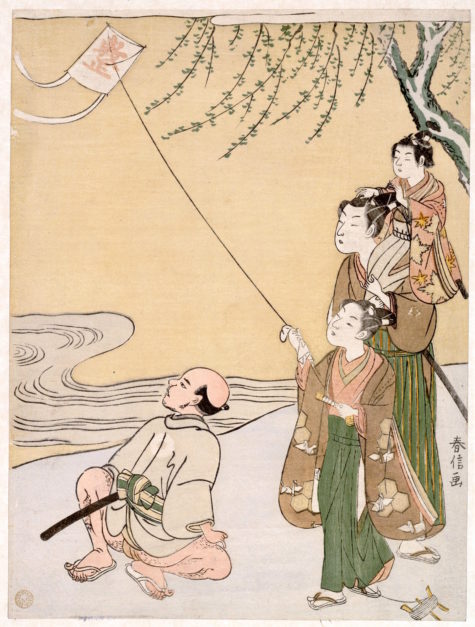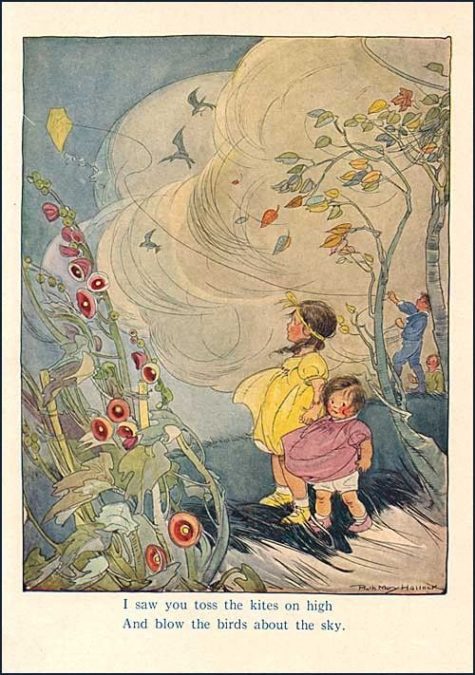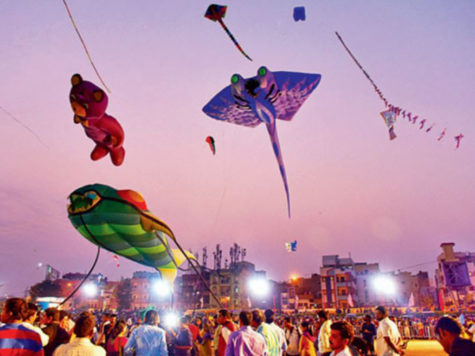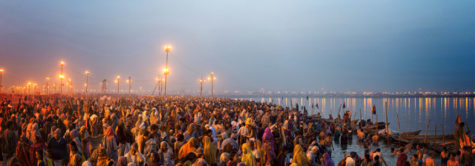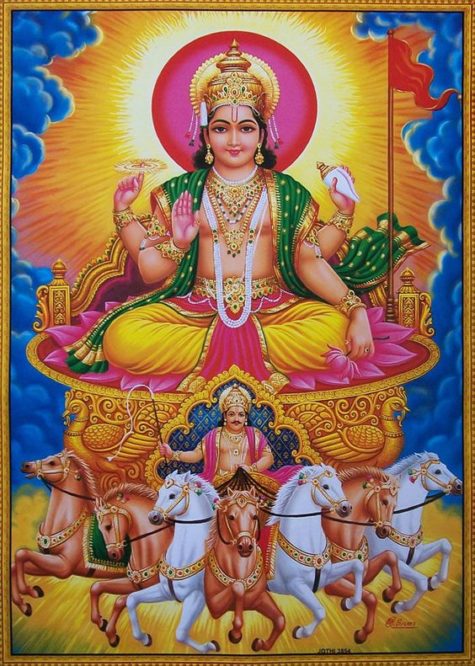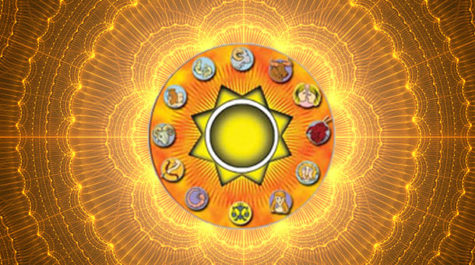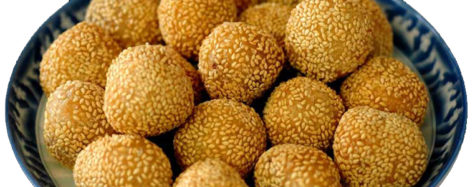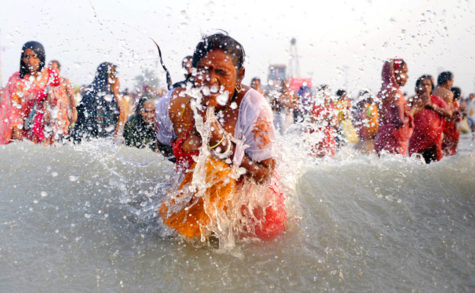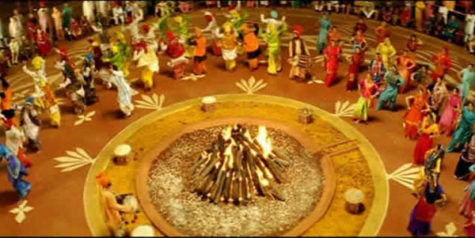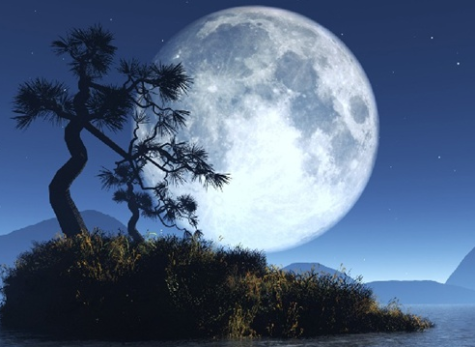Kites
Go Fly A Kite Day
“Go fly a kite” is an idiom that is used as a way of telling someone to go away or to leave you alone. The phrase originated in the 1940s and was very popular at that time and for the next few decades. Its meaning is derived from its literal meaning: a person would probably need to go away to actually fly a kite. A similar phrase is “Go jump in a lake.” In these phrases, the important word is “go,” not the place where the person is directed to go. Another idiom with a similar meaning is “Get lost.”
Go Fly a Kite Day is observed next on Sunday, April 21st, 2019. It has always been observed the third Sunday in April.
Source: Checkiday
Observed annually on February 8th, National Kite Flying Day is marked by kite flying enthusiasts across the country.
Kites date back to China in 470 B.C. China is full of lore and histories of the origins of the kite. Many are related to the way wind affects the leaves on the trees, the shelters they lived in, blowing away the sails on their ships and the hats they wore upon their heads. The stories also tell of kites being invented to spy on their enemies or to send messages.
There is also evidence that the people of South Sea Islands were using kites for fishing around the same time as the people of China.
Early kites were constructed from bamboo or sturdy reeds for framing. Leaves, silk or paper made ideal sails. Vines or braided fibers completed the line or tether. While kites were initially used as tools, they were also ceremonial as well. Used to send messages into the heavens or to lift offerings up to the gods, kites had a symbolic place in the culture.
For A Magickal Kite Flying Day
- Themes: Wishes; Freedom; Playfulness; Air; Movement
- Symbols: Wind; Sailing Ships
- Presiding Goddess: Shina Tsu Hime
About the Goddess Shina Tsu Hime:
This Japanese wind goddess disperses the morning fog. She also keeps away evil, distracting winds, winds that threaten to uproot or blur our spiritual focus. Because of this, Shina Tsu Hime has become the patroness of sailors and farmers, the latter of whom pray to her for fertile winds bearing seed and rain.
To do today:
Join our Eastern cousins in kite-flying festivities. Shina Tsu Hine will be glad to meet with you in a nearby park and give life to your kite. As it flies, release a wish on the winds. Or cut the kite free and liberate a weight from your shoulders.
While you’re out, gather up nine leaves that Shina Tsu Hime banters about (one for each remaning month). Turn clockwise in a circle, releasing all but one leaf back into Shina Tsu Hime’s care while saying:
Come May, bring movement in my goals.
Come June, playful love makes me whole.
Come July, my wishes I will see.
Come August, hope grows in me.
Come September, all distractions you abate.
Come October, my spirit you liberate.
Come November, my health is assured.
Come December, in my heart you endure.
Keep the last leaf with you, releasing it only when you need one of this goddess’s attributes to manifest quickly.
Kite Flying Tips
Today kites are popular both as hobbies and for outdoor fun. They range from a simple diamond kite to more complicated box kites and giant sled kites. Stunt kites, also known as sport kites, are designed so the operator can maneuver the kite into dips, twists, and dives with dramatic effect.
Go outside and fly a kite if weather permits. If not, make one inside. In some parts of the country, the time of year may make it difficult to fly a kite. There are kite festivals at various periods of the year. Use today to scout out those festivals and make a plan to join in. Use #NationalKiteFlyingDay to post on social media.
How to get your kite up in the air and keep it there:
- Be sure the kite is assembled correctly.
- Check the wind. Some kites require more wind and others less. Picking the right day for your kite is key. A light breeze (5-20 mph) is generally optimal.
- Be safe. Don’t fly the kite near power lines, trees or other sky high obstacles. Wide open spaces are best.
- Be safer. Don’t fly in the rain.
- When launching the kite, be sure to have your back to the wind. If the wind is light, have a friend hold the kite down wind and hold your line taught, reeling in slowly until the kite launches.
- Don’t let the line out too quickly. Let the line out at the same pace the kite is gaining altitude.
Kite Flying Quotes
Throw your dreams into space like a kite, and you do not know what it will bring back, a new life, a new friend, a new love, a new country.
~Anais Nin
Kites fly highest against the wind, not with it.
~Winston Churchill
A kite needs to be tied down in order to fly. I learned how important restrictions can sometimes be in order to experience freedom.
~Damien Rice
You will find truth more quickly through delight than gravity. Let out a little more string on your kite.
~Alan Cohen
My wife holds the kite strings that let me go ‘weeeeeee’, then she reels me back in.
~Jeff Bridges
Strong people are made by opposition like kites that go up against the wind.
~Frank Harris
Sources:
One of the most popular holidays in Japan, Kodomo-no-hi or Children’s Day is celebrate on May 5th. Though it is called Children’s Day today, this holiday is celebrated as “Boy’s Day”. The fifth day of the fifth month is traditionally called Tango no Sekku. Girls have their own festival, called Hina Matsuri (Doll Festival), held on the third day of the third month.
On Kodomo-no-hi families drive bad spirits away and celebrate the prospects of their son’s future. Warrior samurai dolls are put on display in the home.
Koinobori, carp streamers, are flown on flagpoles and from balconies. The carp was chosen because it symbolizes strength and success; according to a Chinese legend, a carp swam upstream to become a dragon. In recent years, as more people have moved into apartments and smaller houses, the carp streamers have also gotten smaller, and there are now miniature versions that are decorated indoors.
Children participate in syobuyu, an ancient ritual, by taking a baths in which the water is sprinkled with iris leaves and roots. This is because the iris is thought to promote good health and ward off evil. Also on this day, families often take Rice cakes wrapped in oak leaves and filled with sweet bean paste, called kashiwamochi, are also eaten.
All these figures: the carp, the samurai, irises, oak trees, and bamboos symbolize strength and courage.
Sources:
Makar Sankranti (also known as Makara Sankranthi or Maghi) refers both to a specific solar day in the Hindu calendar and a Hindu festival in reference to deity Surya (sun) that is observed in January every year. It marks the first day of sun’s transit into the Makara (Capricorn), marking the end of the month with the winter solstice and the start of longer days.
- Significance: Festival of Harvest, welcome longer days, sun worship
- Celebrations: Kite flying, bonfires, fairs, surya puja in river, feast, arts, dance, socialization
Makar Sankranti is one of the few ancient Hindu festivals that has been observed according to solar cycles, while most festivals are set by the lunar cycle.
Being a festival that celebrates the solar cycle, it almost always falls on the same Gregorian date every year (January 14), except in rare years when the date shifts by a day for that year, because of the complexity of earth-sun relative movement.
Makar Sankranti is observed with social festivities such as colorful decorations, rural children going house to house, singing and asking for treats (or pocket money), fairs, dances, kite flying, bonfires and feasts.
The Magha Mela is mentioned in the Hindu epic, the Mahabharata, thus placing this festival to be around 2,000 years old.
Makar Sankranti is regarded as important for spiritual practices and many people take a holy dip in sacred rivers or lakes, especially Ganga, Yamuna, Godavari, Krishna and Cauvery. The bathing is believed to result in merit or absolution of past sins.
Every twelve years, the Hindus observe Makar Sankranti with one of the world’s largest mass pilgrimage, with an estimated 40 to 100 million people attending the event. At this event, they say a prayer to the sun and bathe at the Prayaga confluence of the River Ganga and River Yamuna at the Kumbh Mela.
Because the festival is dedicated to the Hindu sun god, Surya, people also pray to the sun and thank for their successes and prosperity. The traditional prayer to the sun is the Gayatri Mantra.
The Gayatri Mantra
The mantra is a hymn to the sun which represents both the physical sun and the Divine in all things. Here it is:
Om bhur bhuvah svah
tat savitur varenyam
bhargo devasya dhimahi
dhiyo yo nah prachodayat.
The eternal, earth, air, heaven
That glory, that resplendence of the sun
May we contemplate the brilliance of that light
May the sun inspire our minds.
Chanting the mantra serves three purposes.
- The first is to give back to the sun. The sun gives but never receives. The mantra is a gift back to the sun, an offering of gratitude to refuel the sun’s gracious offering.
- The second purpose is to seek wisdom and enlightenment. The mantra is a request to the sun: May we meditate upon your form and be illumined by who you are? (Consider that the sun offers its gift of illumination and energy to all beings, without judgment and without attachment to the outcome of the gift.)
- Finally, the mantra is an expression of gratitude, to both the life-giving sun and the Divine. The sensibility it evokes is more important than the literal meaning. It’s an offering, a way to open to grace, to inspire oneself to connect to the ancient vision of India.
An Auspicious Period
Makar Sankranti is regarded as the beginning of an auspicious phase or the holy phase of transition. It also marks the end of an inauspicious phase which begins around mid-December. Further it is also believed that any sacred ritual can be performed from this day onwards. The auspicious day of Makar Sankranti marks the beginning of warmer and longer days as compared to nights.
Makar Sankranti is all about forgetting bitter and sad moments which happened in the past and welcoming the new phase of life which is full of purity, knowledge and wisdom.
The Significance of Makar Sankranti
The significance of the Makar Sankranti festival is that it marks the day where there is a significant movement in the zodiac ~ the arrangement of the earth’s dial around the sun ~ and this movement brings about a new change in the way we experience the planet itself.
There are many sankrantis through the year; the two significant ones being Makar Sankranti, and right opposite, after summer solstice is Karka Sankranti. In between, there are many Sankrantis ~ every time the zodiac sign changes, it is called a Sankranti to suggest the movement of the planet, to understand that our life is sustained and nourished by this movement. If this movement ceases, everything about us will cease.
On the 22nd of December, the solstice happened, that means in relation to the sun, the movement or the tilt of the planet reaches its maximum. Now, from this day on, the northern movement is strong. Things really start changing upon the earth. From Makar Sankranti onwards, winter is being relieved step by step.
This movement is also a significant aspect in the way we reap from this planet. There was a time when human beings could eat only what the earth offered. Then we learned how to get what we wanted from the earth; this is called agriculture. When we were hunting and gathering, we only picked up what was there.
It is like when you were an infant, you ate or swallowed whatever your mother gave you. When you became a child, you asked for what you wanted. So we grew up a bit and started demanding and getting what we wanted, but still, you can only get what you want to a point that She is willing. If you stretch it beyond that, you will not only not get it, you will get something else. That is called industrialization.
Agriculture is coaxing the Mother to give what you want. Industrialization is ripping her apart. I am not speaking against something. I want you to understand the way our minds are transiting, the way human activity is transiting from one level to another.
So this is a day when we remind ourselves that everything that we are is what we take from this planet. I see everywhere in the world, people are talking about giving. I don’t know from where they give. You can only take ~ either you take gently or you grab. Did you come with your own property from somewhere? What is there to give? You can only take. Everything is offered. Take sensibly, that is all there is.
Some Thoughts About Movement
Makar Sankranti is celebrated as a very important festival in India. Sankranti literally means “movement.” Everything that we recognize as life is movement. Fortunately, people who came before us have moved on, and people who come after us are waiting for us to move on ~ don’t have any doubts about this.
The planet is moving and that is why it churns up life. If it were still, it wouldn’t be capable of life. So there is something called movement in which every creature is involved, but if there has to be movement, this movement has to be housed ~ this movement can only happen in the lap of stillness. One who does not touch the stillness of his life, one who does not touch the stillness of his being, one who does not know or has not tasted the stillness within and without, will invariably get lost in the movement.
Movement is pleasant only to a point. The planet earth is moving gently in such a beautiful manner ~ it is only changing seasons. Tomorrow, if it just speeds up, throttles up a little bit, then all our seemingly balanced minds will become imbalanced, everything will spin out of control. So movement is beautiful only to a certain point. Once it crosses that point, movement becomes torture.
So Makar Sankranti is a festival to recognize the movement, movement being celebration, movement being life, movement being the process of life and the beginning and the end of life. At the same time, the word ‘shankara’ is used to remind you that the one behind this, Shiva, is a still one; stillness is the basis of movement.
Though all the other planets are moving, the most important one is not moving. If the sun also takes a walk, then we are in trouble. He hangs there not moving. That is why everybody else’s movement is okay. But his stillness is relative because the whole solar system may be moving; the whole galaxy may be moving. So beyond that, the space which holds all this is absolute stillness.
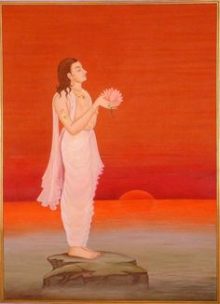 When a human being makes the necessary effort to touch the stillness within himself, only then he knows the joy of movement. Otherwise, people are bewildered by the movement of life. Every change that happens in their life they suffer.
When a human being makes the necessary effort to touch the stillness within himself, only then he knows the joy of movement. Otherwise, people are bewildered by the movement of life. Every change that happens in their life they suffer.
These days, the so-called modern life is like this ~ any change means you must suffer. Childhood is tension, puberty is great suffering, middle age is unbearable, old age is abhorred and feared, and death is celebration ~no that is pure terror.
Every stage of life is a problem because people have a problem with movement, not understanding that the very nature of life is movement. You can only enjoy and celebrate movement if you have one leg stuck in stillness. If you know what stillness is then movement would be a pleasure. If you do not know what stillness is, if you have no contact with stillness, movement is bewildering.
People are trying to track the movement. Looking at the stars, looking at lines in their hands and looking at all kinds of signs including the tea leaves. People want to read the movement of their lives somehow. This struggle with movement, this paranoia about movement, is happening because there is no taste of stillness.
If there was a taste of stillness in you, movement would not disturb you. It is something which sets a certain rhythm. Every rhythm has a beginning and an end; every movement has a beginning and an end. Movement means that which is in transition. Stillness means that which always is. Movement means compulsiveness, stillness means consciousness.
The significance of Makar Sankranti is that it is the time to remind yourself that celebrating movement is possible only when there is a taste of stillness within you.
Regional Celebrations
Because the festival is celebrated in winter, people start preparing food which can give them give them energy and also keep their body warm. Tilguls ~ Laddu of Til (Sesame) is made up of Jaggery and devotees also pay respect to Goddess Saraswati.
This type of sweet is a symbolism for being together in peace and joyfulness, despite the uniqueness and differences between individuals.
People greet each other Happy Sankranti by saying Tilgul Ghya Aani God God Bola.
For most parts of India, this period is a part of early stages of the Rabi crop and agricultural cycle, where crops have been sown and the hard work in the fields is mostly over. The time thus signifies a period of socializing and families enjoying each other’s company, taking care of the cattle, and celebrating around bonfires.
The Makar Sankranti festival is also known and referred to as the harvest festival because this is the time when harvesting is complete and there are big celebrations. This is the day we acknowledge all those who assisted in making the harvest. The farm animals play a huge role in harvesting, so the following day is for them and is called Mattu Pongal.
The first day is for the earth, the second is for us and the third is for the animals and livestock. See, they are placed a little higher than us because we exist because of them, they do not exist because of us. If we were not here, they would all be free and happy. But if they were not here, we couldn’t live.
These festivals are a reminder that we need to craft our present and our future in a conscious manner.
Also, on this day there are several Melas or fairs which are been held and one of the most famous among all melas is Kumbh Mela. It is been held every 12 years at one of four holy locations namely Haridwar, Prayag, Ujjain and Nashik.
The Magh Mela which is the mini mela is held annually at Prayag, the Gangasagar Mela held at the Ganges River, Tusu Mela in parts of Jharkhand and West Bengal and many more such fairs are been held on this auspicious day.
Regional Names
Known by different names and celebrated with different customs in different parts of the region, Makara or Makar Sankranti is an important pan-Indian solar festival observed on the same date, sometimes for multiple dates.
It is known as Pongal in Tamil Nadu, Pedda Panduga in Andhra Pradesh, Biku in Assam, Magha Mela in parts of central and north India, as Makar Sankranti in the west, and by other names. The festivities associated with Makar Sankranti are known by various names such as Lohri by north Indian Hindus and Sikhs, Sukarat in central India, Bhogali Bihu by Assamese Hindus, and Pongal by Tamil and other south Indian Hindus.
Wikipedia gives us this list:
- Suggi Habba, Makar Sankramana , Makara Sankranthi: Karnataka
- Makar Sankranthi: Andhra Pradesh, Telangana, Kerala
- Makar Sankranti: Chhattisgarh, Goa, Odisha, Bihar, Jharkhand, Madhya Pradesh, Maharashtra, Manipur, Rajasthan, Sikkim, Tripura, Uttar Pradesh, Uttarakhand, West Bengal and Jammu
- Thai Pongal, Uzhavar Thirunal: Tamil Nadu
- Uttarayan: Gujarat
- Maghi: Haryana, Himachal Pradesh and Punjab.
- Magh Bihu or Bhogali Bihu: Assam
- Shishur Saenkraat: Kashmir Valley
- Khichdi: Uttar Pradesh and western Bihar
- Poush Sangkranti: West Bengal
- Tila Sakrait: Mithila
In other countries too the day is celebrated by Hindus, but under different names and in different ways.
- Nepal: Maghe Sankranti or Maghi- /Khichdi Sankranti
- Bangladesh: Shakrain/ Poush Sangkranti
- Pakistan: (Sindh): Tirmoori
Sources:
Qingming Festival (also known as Pure Brightness Festival or Tomb-sweeping Day), falls on either April 4th or 5th of the Gregorian calendar. The Chinese respect for filial piety and careful attention to funeral rites is visibly manifested in the custom of ancestor worship.
Since ancient times, a day has been designated for sweeping the tomb and honoring one’s ancestors. Though different in each family, these rites are usually performed on the first few days prior to or following Ching Ming, one of the traditional solar divisions falling in early April, when the frost retreats and spring returns bringing renewal to all living things.
When visiting the tomb, people usually bring the dead person’s favourite food and wine, and paper resembling money . This is in the hope that the deceased are not lacking food and money. After burning the paper money, tidying up the tomb, and putting willow branches around the gates and doors of the tomb to ward off evil spirits, people will eat the food and fruit before returning to their homes.
The folklore behind the story is as follows:
It is said that the Qingming Festival was originally held to commemorate a loyal man living in the Spring and Autumn Period (770 – 476 BC), named Jie Zitui. Jie cut a piece of meat from his own leg in order to save his hungry lord who was forced to go into exile when the crown was in jeopardy. The lord came back to his position nineteen years later, and forgot Jie Zitui but later felt ashamed and decided to reward him. However, Jie had blocked himself up in a mountain with his mother. In order to find Jie, the lord ordered that the mountain should be set on fire. Later Jie was found dead with his mother. In order to commemorate Jie, the lord ordered that the day Jie died was Hanshi (Cold Food) Festival – the day that only cold food could be eaten.
The second year, when the lord went to the mountain to sacrifice to Jie, he found willows revived, so he gave instructions that the day after Hanshi Festival was to be Qingming Festival. Later, the two festivals were combined as one.
Traditional Customs
Qingming Festival is a time of many different activities, among which the main ones are tomb sweeping, taking a spring outing, and flying kites. Some other lost customs like wearing willow branches on the head and riding on swings have added infinite joy in past days. The festival is a combination of sadness and happiness.
Cleaning the tomb and paying respect to the dead person with offerings are the two important parts of remembering the past relatives. Weeds around the tomb are cleared away and fresh soil is added to show care of the dead.
Today, with cremation taking over from burying, the custom has been extremely simplified in cities. Only flowers are presented to the dead relatives and revolutionary martyrs. No matter how respect is shown, good prayers for the deceased are expressed.
All in all, the Qingming Festival is an occasion of unique characteristics, integrating sorrowful tears to the dead with the continuous laughter from the spring outing.
From: Travel China Guide
Daeboreum (literally “Great Full Moon”) is a Korean holiday that celebrates the first full moon of the new year of the lunar Korean calendar which is the Korean version of the First Full Moon Festival. This holiday is accompanied by many traditions. The 2017 date is February 11, in 2018 the date is March 2.
Many customs and games are traditional on this day, which is also sometimes called the Great Fifteenth. The Fifteenth, or Full Moon Day, marks the end of the New Year season in Korea and is regarded as the final opportunity to ensure good luck for the coming year.
It is considered lucky on this day for people to routinely repeat their actions nine times—particularly children, who compete with each other to see how many “lucky nines” they can achieve before the day is over.
It is common to celebrate the Great Fifteenth with kite flying and kite fighting, which is done by covering the strings with glass dust and then crossing them so that they rub together as they fly. The string held by the more skillfully manipulated kite eventually cuts through the string of the less successful kite, sending it crashing to the ground.
Another popular sport on this day is the tug-of-war. In some areas, an entire town or county is divided into two opposing teams. It is widely believed that the winners will bring in a plentiful crop and will be protected from disease in the coming year.
One familiar custom is to crack nuts with one’s teeth. It is believed that this practice will help keep one’s teeth healthy for the year.
In the countryside, people climb mountains, braving cold weather, trying to catch the first rise of the moon. It is said that the first person to see the moon rise will have good luck all year or a wish will be granted.
People play the traditional game named Jwibulnori (쥐불놀이) the night before Daeboreum. They burn the dry grass on ridges between rice fields while children whirl around cans full of holes, through which charcoal fire blaze. These cans fertilize the fields and get rid of harmful worms that destroy the new crops.
For breakfast, a five-“grain” rice consisting of rice, millet, Indian millet, beans, and red beans is served (gok includes grains and beans). This is eaten with various dried herbs. One of the special foods of Daeboreum is Yaksik (약식 / 藥食). This treat is made of glutinous rice, chestnuts, pinenuts, honey, sauce, and sesame oil.
Also there is wine drinking for Daeboreum. It called ‘Ear-quickening wine (귀밝이술)’. This alcohol means that if someone drank this alcohol, he or she would be quick to hear and hear good news for one year.
On this day, Koreans traditionally do not give any food to dogs since it is believed that dogs that eat on this day will contract gad flies and become ill during the coming summer.
Sources: Wikipedia and Answers.com
